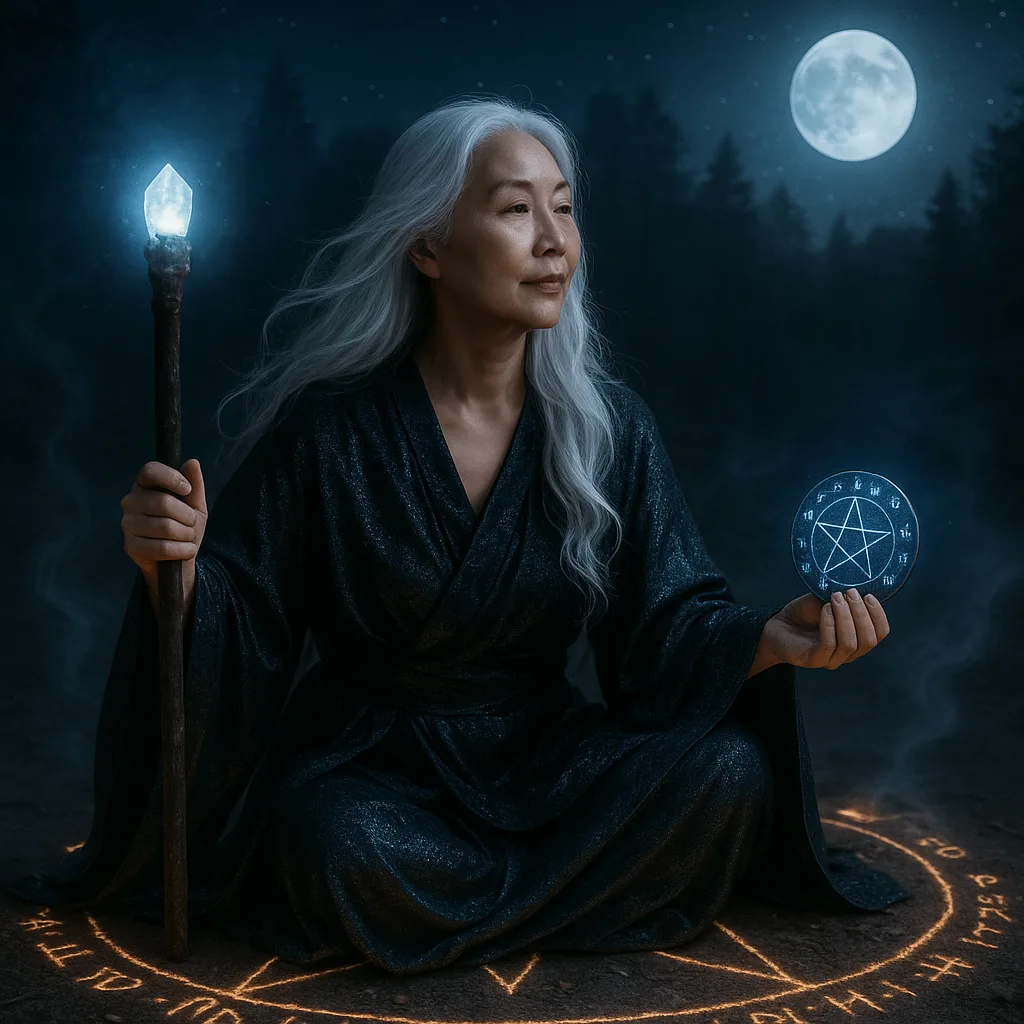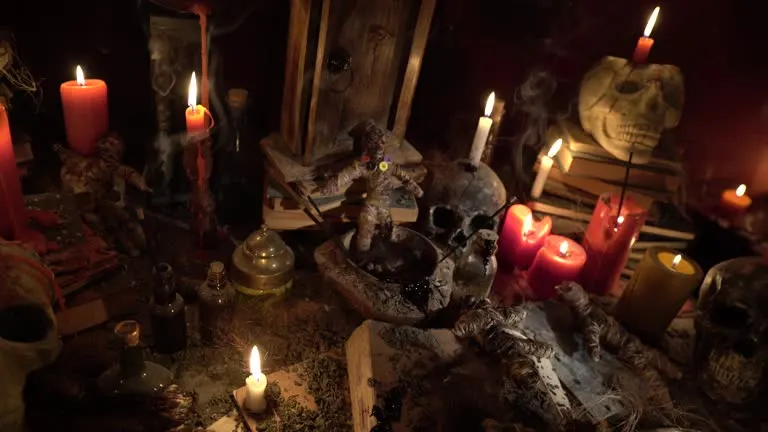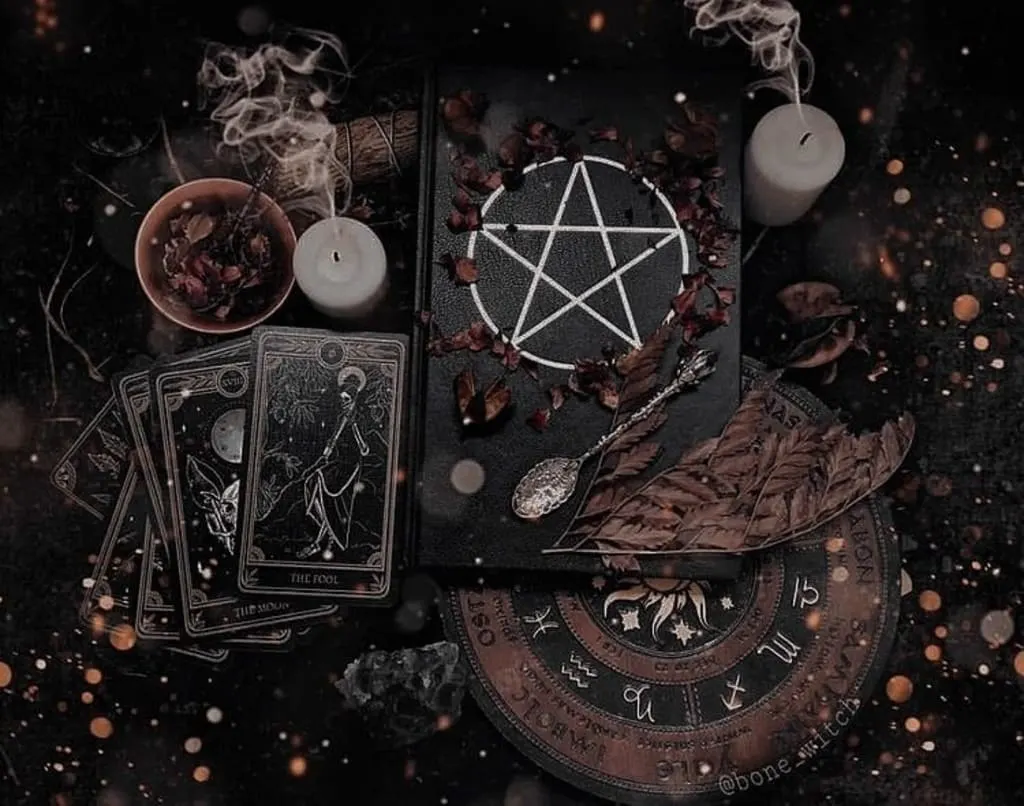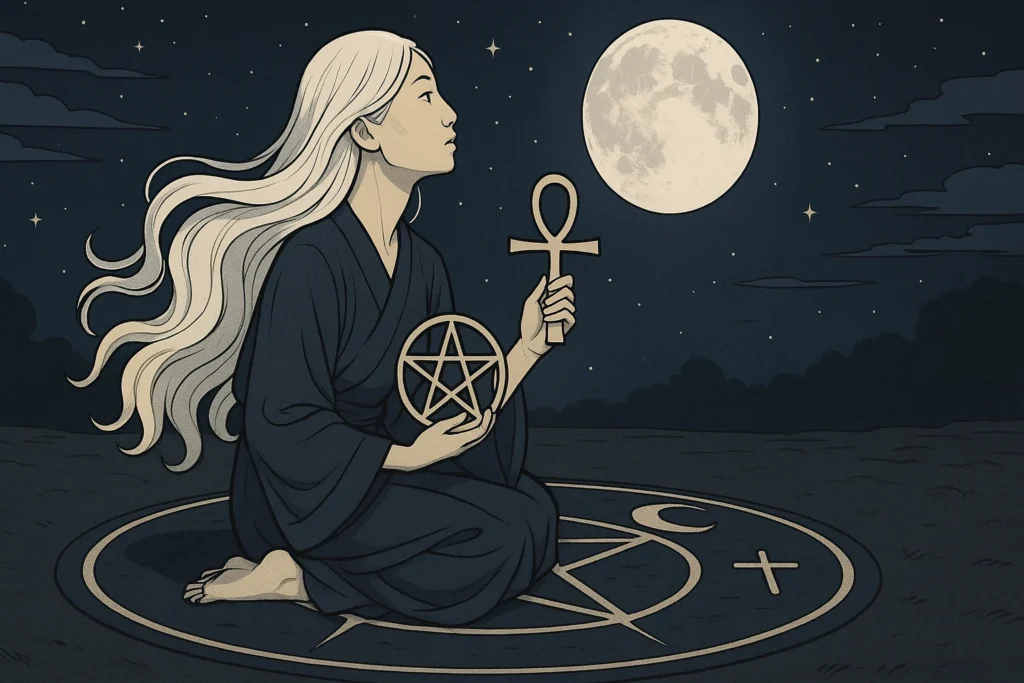I’ve been walking the winding path of the Craft for almost seventeen years now. That’s seventeen years of burning herbs under full moons, of whispered invocations, of dreamwork and divination. It’s been seventeen years of falling in love with energy, both its gentleness and its teeth.
So when people come to me and ask, “What’s the difference between black magic and dark magic?”, I don’t answer from a textbook. I answer from bone memory, from lived ritual, and from my own mistakes.
Because, my loves, I’ve walked with both.


The First Time I Touched the Dark
Let’s start here: I am Wiccan by foundation, but eclectic by practice. I was initiated into a coven that honored the Triple Goddess and the Horned God. We worked with light, with healing, with harmony. But even in those early years, I was drawn to the shadows — the deep places most feared to look.
I remember one Samhain night, maybe ten years ago, when I first truly felt the pull of what I now call dark magic. Not black. Not evil. But primal, and quiet, and raw.
That night, I sat in my circle with nothing but obsidian in my palm and the scent of mugwort rising around me. I was calling not for power, not for vengeance — but for truth. The kind of truth that only lives in silence, in pain, in the forgotten rooms of the soul.
That’s dark magic.
It doesn’t lash out like black magic. It doesn’t want to dominate or destroy. It wants to reveal.
Dark magic, to me, is ancestral. It is underworld work. It is shadow work. It is touching grief and death and trauma — not to wallow in them, but to heal them from the inside. It doesn’t wear a mask of light, but it doesn’t feed on suffering, either.
It is the Witch’s wisdom that says: I will sit with this darkness and not flinch.
When I Crossed the Line into Black Magic
But here’s the part that isn’t easy to write. Because I have crossed that line. More than once.
Black magic is different. It tempts you when you feel powerless. It comes to you when your heart is broken, when betrayal has left you shaking, when you are desperate to make the world bend to your will.
And once, I did just that.
I cast a binding spell on a former lover. Not a gentle cord-cutting, not a protection ward — but a spell fueled by fury. I wanted him to feel what I felt. I wanted his life to fall apart as mine had. And I had the tools to do it.
And it worked.
Not in dramatic Hollywood fashion. There were no fireballs or demons. But within weeks, he lost his job. His new relationship crumbled. He texted me at 2 a.m., drunk and broken. And I should have felt victorious.
Instead, I felt sick.
Because black magic doesn’t just harm the target. It stains the caster. Every time you send that venom out, some of it lingers on your own skin. That spell taught me a painful lesson: just because you can, doesn’t mean you should.


The Difference, as I See It Now
So here it is — not a scholarly definition, but the truth from a woman who has danced through both fire and fog:
And yes, both require responsibility. Both require clarity. But only one seeks to reclaim power with integrity.
1. Black Magic
- Definition: Traditionally refers to the use of supernatural powers for selfish, malevolent, or harmful purposes.
- Origins: Historically associated with occult practices, especially those that are secretive or forbidden, such as summoning demons, casting curses, or performing rituals meant to harm others.
- Cultural Weight: Often tied to cultural taboos and stigmas, especially in religious or superstitious contexts. In many belief systems, black magic is explicitly condemned.
- Examples: Voodoo curses, necromancy, hexes, or rituals intended to manipulate or destroy others.
2. Dark Magic
- Definition: A broader term that includes any form of magic associated with darkness, fear, or evil. It’s often used in fantasy or fictional contexts.
- Scope: Not always inherently “evil” — sometimes it just means magic that draws on dark forces or themes (e.g., death, shadows, the underworld).
- Fictional Use: Frequently appears in books, games, and movies. May include both harmful and morally ambiguous magic.
- Examples: Using shadow powers, communicating with the dead, blood magic, or forbidden knowledge.
Key Differences:
| Feature | Black Magic | Dark Magic |
|---|---|---|
| Intent | Almost always malicious or harmful | Can be harmful, morally grey, or neutral |
| Context | Often real-world occult or religious | Mostly fictional or fantasy |
| Connotation | Strongly negative | More nuanced, context-dependent |
| Examples | Curses, demonic rituals | Necromancy, shadow manipulation |
In short:
- Black magic is a more specific and traditional term focused on evil intent.
- Dark magic is broader and more flexible, often used in storytelling to describe any non-light, mysterious, or dangerous form of magic.
Why I Still Work with the Dark
People sometimes ask me, “If dark magic is so close to danger, why not avoid it altogether?” My answer is simple: because there is healing in the night. There is knowledge in the grave. There is a sacred kind of love that only comes from sitting with the unspoken.
I do not fear darkness. I honor it.
I work with deities like Hecate and the Morrigan. I speak to the dead. I unravel trauma with candle flames and chants older than cities. That is my practice, my purpose, and my gift.
And I do it ethically, always.
Because this world has enough wounded witches casting spells from their pain. We don’t need more curses. We need more courage to feel.


A Final Word, Sister to Sister
If you’re a baby witch, or just curious, please listen: magic is not just about what you can do. It’s about what you choose to do. The Craft doesn’t make you powerful — it reveals who you already are.
So ask yourself: do you want to manipulate, or to transform?
That answer will tell you everything.

